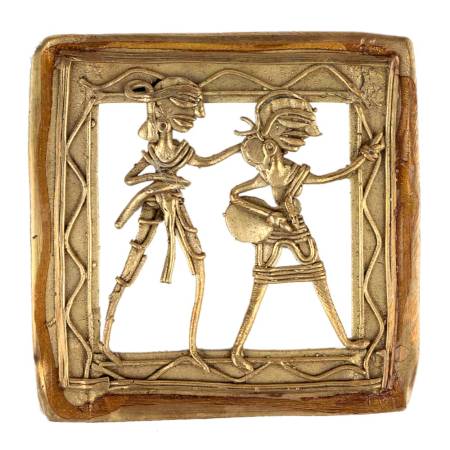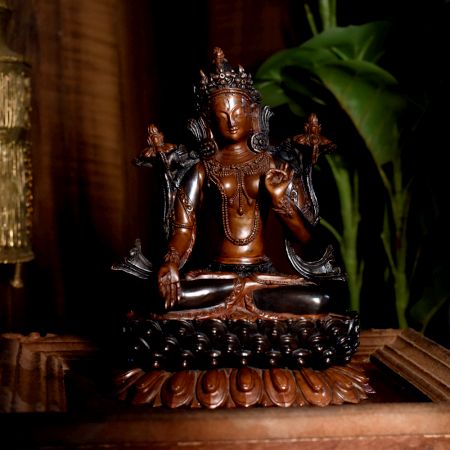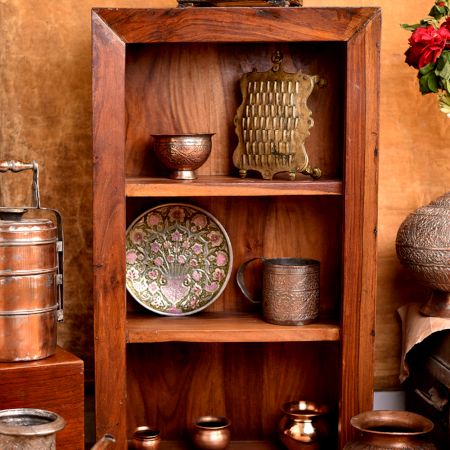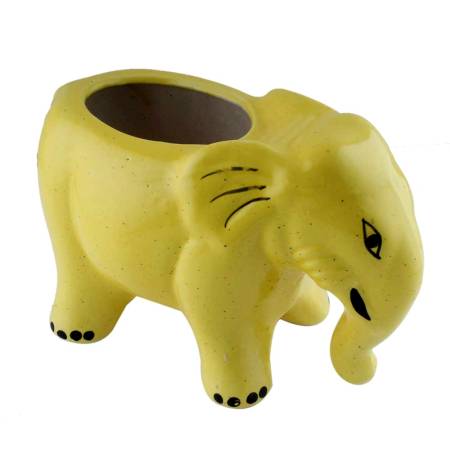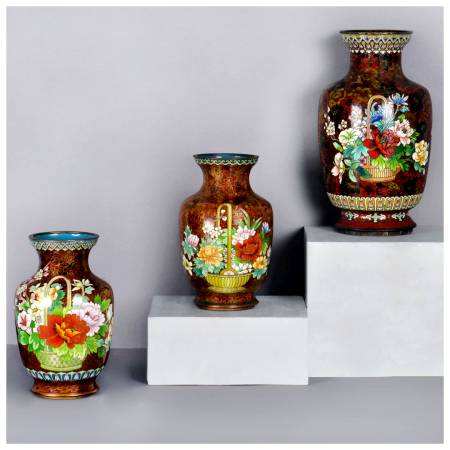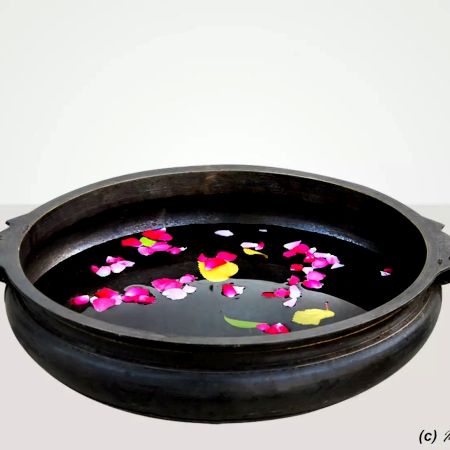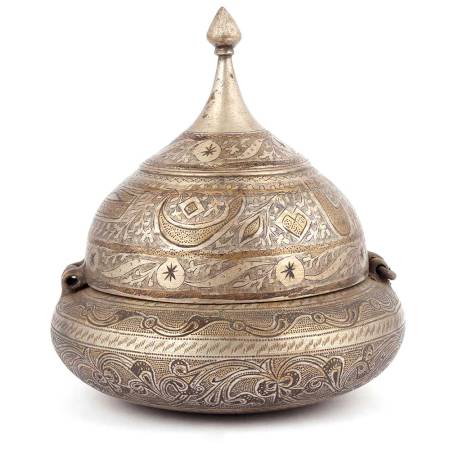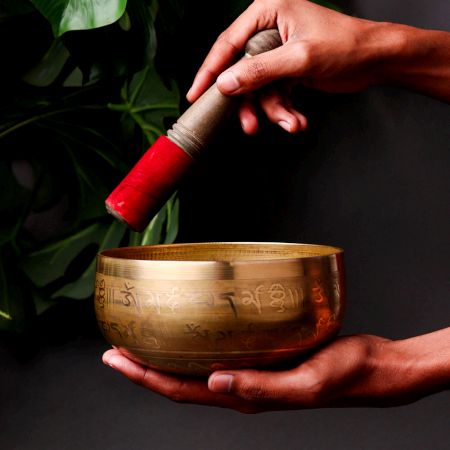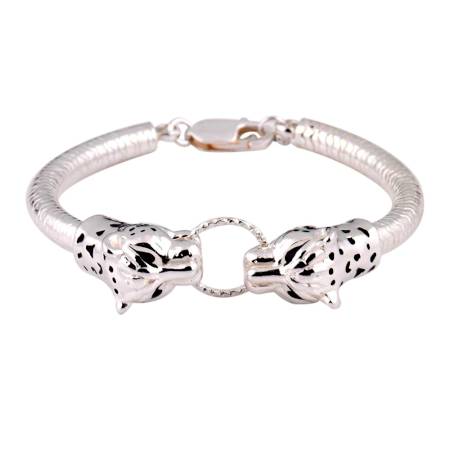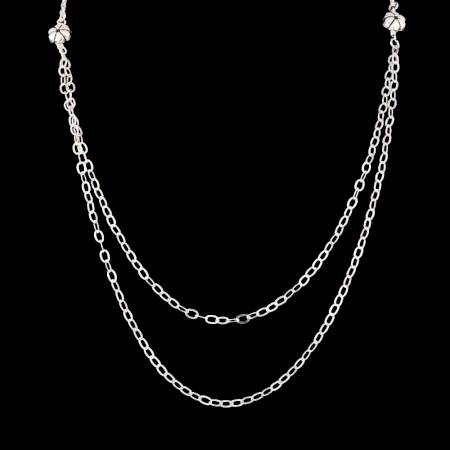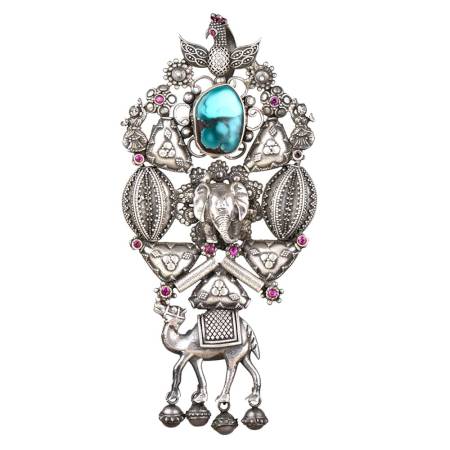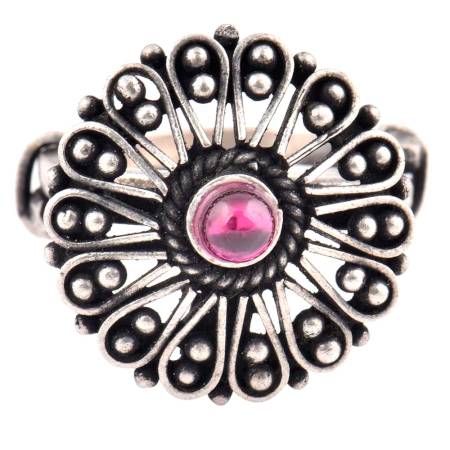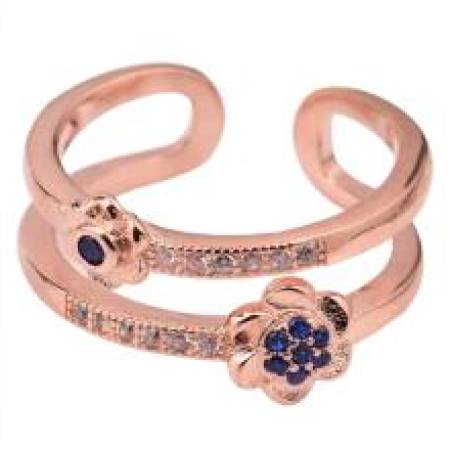Brighten up Your Indoor Spaces with Quirky Ceramic Planters
General Understanding Of Ceramic Planters
Ceramic planters embody both art and utility. They are crafted from clay and shaped with care, designed to hold life while enriching spaces. For centuries, people have relied on them in courtyards, balconies, and gardens. Their presence carries cultural echoes, reminding us of traditions that valued durability and beauty together. In a modern home, they act as subtle accents that frame greenery. In outdoor gardens, they serve as anchors that withstand climate and time. Ceramic planters are not simply containers. They are silent witnesses of heritage, function, and evolving design that continue to remain timeless.
What Is A Ceramic Planter?
A ceramic planter is made from fired clay and designed to nurture plants while enhancing interiors or gardens. Its roots are in pottery traditions where form and survival were balanced. The clay body allows breathability, regulating soil and temperature for better growth. From rustic terracotta placed in rural homes to fine porcelain found in European salons, these planters exist across geographies and cultures. They act as vessels of both life and meaning, holding roots firmly while elevating design. The core of a ceramic planter lies in its role as a practical object with an aesthetic soul.
What Purposes Do Ceramic Planters Commonly Serve?
Ceramic planters serve dual purposes that are inseparable in practice.
- Practical role: They provide soil stability, regulate temperature, and protect roots.
- Decor role: They create visual presence, bringing character to homes and gardens.
In living rooms, glazed planters brighten corners with reflective beauty. In outdoor spaces, terracotta keeps roots cool and stable under sun. In both, they stand as more than objects. They weave nature into human spaces while narrating cultural stories. Ceramic planters thus create harmony between growth and design, where every vessel nurtures both life and style with equal importance.
What Are The Most Recognized Styles In Ceramic Planters?
Ceramic planters appear in a wide range of styles, each carrying a unique history. Glazed planters glow with bright colors that reflect light and energy. Unglazed terracotta creates earthy warmth and rustic depth. Hand painted designs tell stories through motifs such as Mughal flowers, Persian patterns, or Japanese simplicity. Stoneware holds strength and durability that suit modern needs. Porcelain carries refinement often reserved for decorative interiors. Minimal matte finishes align with urban aesthetics that prize restraint and calm. Each style is not only a choice of design but also a voice of culture, heritage, and individuality.
Why Are Ceramic Planters Still Popular In Homes And Gardens?
Ceramic planters remain popular because they balance durability with beauty. Their weight offers stability in gardens and balconies, while their porous nature maintains soil health. Indoors, their ability to fit any theme stands out, whether rustic hand painted or sleek modern. They age gracefully unlike plastic, developing a patina that tells stories over time. Across cultures, clay is seen as grounding and life affirming, which adds to their timeless appeal. These qualities make ceramic planters more than functional items. They are enduring companions of both homes and gardens, bridging nature with artistry across generations.
Techniques, Mediums And Craftsmanship In Ceramic Planters
Ceramic planter making is an ancient practice that unites science with storytelling. From the earliest clay vessels to today’s refined designs, the craft has evolved while retaining its roots. Shaping, drying, and firing clay requires patience and skill. Every choice of clay or glaze alters the outcome, turning a simple container into a meaningful artifact. What looks effortless on a shelf is the result of years of inherited knowledge and hands trained to control earth and fire. These planters reflect a shared tradition, where material transforms into memory and function blends with visual and cultural depth.
How Are Ceramic Planters Traditionally Made?
The journey begins with clay, softened and shaped by hand or wheel. Once formed, the piece must dry slowly to prevent cracks or weakness. It is then fired in kilns where heat transforms clay into stone like strength. Earthenware is created at lower temperatures, while stoneware and porcelain demand higher heat. After the firing, surfaces are completed through glazes or hand painting. These glazes add color, shine, and protection. Patterns from floral to geometric finish the piece, offering layers of narrative. Ceramic planters thus reflect both science and artistry, each step a delicate balance of skill and patience.
What Materials Are Commonly Used In Ceramic Planter Crafting?
The choice of material defines both identity and performance.
- Earthen clay: porous and traditional, widely used for rustic designs.
- Terracotta: reddish clay, valued for natural cooling and cultural heritage.
- Stoneware: denser, modern, and known for its lasting durability.
- Porcelain: refined and smooth, associated with elegance and artistry.
Each carries cultural weight. Terracotta dominates Indian courtyards where heat needs balance. Porcelain is linked to refinement in China and Europe. Stoneware dominates urban homes for its strength and style. These materials show that a ceramic planter is never just clay. It is a cultural and functional choice shaped by need, tradition, and beauty.
What Role Do Glazes, Patterns, Or Textures Play In Ceramic Planters?
Glazes, patterns, and textures transform simple clay into expressive art. Glazes protect surfaces and add finish, whether glossy for vibrancy or matte for restraint. Patterns communicate heritage, from floral motifs linked to fertility to geometric lines tied to order and structure. Textures bring tactile meaning. Rough terracotta connects users to earth, while smooth porcelain offers refinement. Japanese Raku celebrates cracks as beauty, a philosophy of wabi sabi that embraces imperfection. These elements are not surface decoration alone. They are layers of culture, storytelling, and emotional resonance that enrich ceramic planters as both object and artifact.
Design Intent And Visual Storytelling Of Ceramic Planters
Ceramic planters are designed with meaning woven into their form. They are more than practical vessels, acting as storytellers through their color, shape, and surface. Each choice reflects identity, mood, and culture. From village courtyards to urban balconies, these objects mirror the societies that create and use them. Some capture heritage in hand painted motifs, while others embrace modern minimalism. Their role is to speak without words, to connect plants with people, and to transform simple acts of care into experiences of beauty. Ceramic planters exist as narratives where function and visual storytelling merge gracefully.
What Stories Or Themes Do Ceramic Planters Aim To Convey?
Ceramic planters hold themes that span tradition and modernity. A lotus motif may symbolize purity, while geometric patterns echo structure and balance. Rustic terracotta speaks of village life and continuity. Minimalist white forms echo calm and restraint in contemporary design. Their meaning adapts to context. What feels familiar in one setting may appear innovative in another. These themes share a common thread of rootedness, growth, and harmony with nature. Ceramic planters therefore go beyond practical use. They embody stories that reflect cultural memory, personal identity, and the timeless desire to live closer to the natural world.
How Do Artisans Express Cultural, Spiritual, Or Natural Symbols Through Planters?
Artisans bring culture to life through motifs and symbols shaped in clay.
- Floral motifs such as lotus, jasmine, or marigold symbolize fertility and purity.
- Geometric designs reflect symmetry, sacred geometry, and cultural order.
- Nature inspired textures such as bark, waves, or leaves ground the vessel in natural rhythm.
A planter with Gajalakshmi motifs in Hindu homes may represent abundance and prosperity. Chinese porcelain often carries dragons that symbolize power and authority. Modern artisans reinterpret these traditions, using simplified leaf engravings or abstract lines to meet contemporary tastes. These symbols transform planters into vessels of memory, identity, and shared cultural voice.
How Do Color, Shape, And Finish Influence The Mood Of Ceramic Planters?
Color, shape, and finish act as mood setters in ceramic planters. Soft pastel tones bring calm to interiors, while deep bold colors energize a room. Round shapes suggest harmony and continuity, while angular designs speak of structure and order. Finishes complete the mood. Matte textures offer grounding and restraint, glossy surfaces add energy and light. A matte black cube may suggest authority in an office, while a turquoise glossy bowl brings playful energy to a patio. Terracotta shades recall rural warmth, porcelain whites suggest aristocratic purity. Mood is shaped through these choices, uniting form with emotional impact.
Purchase, Collection & Investment Of Ceramic Planters
Ceramic planters are not just plant holders. They are cultural fragments shaped through fire and clay, carrying stories of tradition, artistry, and modern design. For collectors, they act as time markers that preserve craft. For homeowners, they bring character to corners, balconies, and gardens. Their presence blends natural growth with artistic permanence. Some carry the earthy calm of terracotta, others shine with glazed brilliance or hand painted motifs. In today’s world, they move fluidly between being functional containers, interior highlights, and even collectible investments. Each piece speaks differently, reminding us that ceramics are more than objects, they are lived expressions.
Where Can You Buy Authentic Or Designer Ceramic Planters?
Authentic ceramic planters are best sourced from artisan clusters, heritage craft fairs, or reputed decor outlets that specialize in handmade products. Online platforms now provide access to both traditional and contemporary designs, often with detailed product stories. High quality designer pieces can be found in boutique home styling stores, where artisans collaborate with modern designers. A few cultural markets in India, such as Jaipur and Khurja, are renowned for ceramics passed down through generations. For global buyers, curated digital stores bridge craft with convenience. The key lies in seeking platforms that emphasize authenticity, where artisanship is valued alongside utility. Choosing from such spaces ensures both quality and cultural depth.
How Can You Verify The Quality Of A Ceramic Planter?
Quality in ceramics is revealed through close observation and tactile checks. A good planter has uniform thickness, a smooth glazed finish without air bubbles, and no visible cracks. The base should sit evenly to ensure stability. Tap lightly, clear ringing indicates strong firing, while a dull sound may signal weakness. Proper drainage holes prevent water stagnation and root damage. Look for consistent glaze coverage, as unevenness can cause early wear. When buying online, reviews and close up product images are useful. Always verify whether it is stoneware, porcelain, or terracotta, since each type affects durability. In essence, quality checks blend visual clarity, structural stability, and long term usability.
- Even glaze and no cracks
- Balanced thickness and smooth edges
- Ringing sound when tapped
- Reliable drainage design
What Makes A Ceramic Planter A Valuable Addition To A Home Or Collection?
A ceramic planter carries more than soil and roots, it holds memory, artistry, and continuity. For homes, they enhance decor by blending natural greenery with tactile artistry. Their cooling effect keeps plants healthier, while visual diversity adds depth to interiors. For collectors, rare hand painted motifs or region specific designs add cultural and monetary value. Vintage pieces can become family heirlooms, embodying a lineage of craft. Contemporary designs, too, are investments, as they merge function with aesthetics that evolve over time. Ultimately, a ceramic planter becomes valuable because it reflects care for both plant life and artistry, bridging the living with the crafted.
Care, Handling & Preservation Of Ceramic Planters
Ceramic planters are durable yet sensitive. Their strength comes from fired clay, but their surface, glaze, and structure require mindful care. Like any crafted object, they demand balance, neither too much moisture nor harsh exposure. Proper handling extends their life, allowing them to retain charm across seasons. When maintained, they preserve the subtle dialogue between plant and planter, a relationship that enriches interiors and gardens alike. Their care is not only practical but also emotional, as it safeguards a piece of heritage while supporting growth within.
How Do You Properly Maintain A Ceramic Planter?
Maintenance begins with simple routines. Wash planters gently with mild soap to remove soil stains and mineral build up. Ensure proper drainage, as stagnant water weakens clay walls. Avoid exposing them to sudden temperature shifts, ceramics can crack in freezing cold or extreme heat. Always use felt pads or coasters indoors to prevent scratches on surfaces. When moving heavy planters, lift rather than drag to protect the base. In humid climates, periodic cleaning prevents algae or moss growth. With these small yet consistent steps, planters remain durable, fresh in appearance, and supportive of healthy plant life across years.
What Materials Best Complement Ceramic Planters In Styling?
Ceramic planters thrive when paired with materials that highlight their natural character. Wooden stands or trays add warmth, while wrought iron frames provide contrast and strength. Woven baskets introduce a rustic, handcrafted texture, perfect for indoor styling. Glass surfaces amplify the glossy shine of glazed ceramics. In outdoor settings, pairing with stone or brick backgrounds emphasizes their earthy presence. These combinations create layers of tone and mood, where planters are not isolated but integrated within larger design schemes. Such styling choices reflect both balance and harmony, helping ceramics blend seamlessly into modern and traditional homes alike.
Can Old Or Damaged Ceramic Planters Be Restored?
Yes, ceramics carry resilience, even when chipped or cracked. Small damages can be fixed using ceramic adhesives or epoxy, ensuring structural strength is restored. Hairline cracks can often be sealed and painted over to prevent expansion. Repainting or reglazing is another way to refresh older pieces, giving them a second life while retaining their original form. For heritage or collectible planters, restoration should be handled by professionals, as improper repair may reduce value. Restored ceramics often carry added charm, their imperfections becoming stories of use and renewal. This balance of utility and history makes preservation a meaningful act.
What Are Common Issues Ceramic Planters Suffer Over Time?
Ceramic planters, though strong, face natural challenges. Cracks form due to temperature stress or mishandling. Fading colors may occur under constant sunlight. Mineral deposits leave white marks when water evaporates. In humid conditions, moss or algae can spread on unglazed surfaces. Drainage holes may clog, weakening roots and stressing the planter. Addressing these issues early preserves both beauty and function. Regular cleaning, protective placement, and mindful watering help avoid most wear. Over time, some aging signs like patina or slight discoloration can even add character, transforming planters into objects that narrate their lived journey.
Home Decor, Styling & Mood Setting With Ceramic Planters
Ceramic planters influence more than plant growth, they shape the atmosphere of a space. Their presence can shift rooms from sterile to soulful, adding balance between natural textures and crafted artistry. In minimal spaces, they introduce color and character. In traditional homes, they resonate with cultural motifs and grounding energy. They become both anchors and accents, highlighting corners, framing entrances, or softening rigid structures. Beyond mere containers, they are design companions, altering moods through tone, texture, and placement. Their role extends beyond utility into visual storytelling, offering a bridge between nature and human creativity.
How Can Ceramic Planters Influence A Room’s Ambience Or Tone?
A ceramic planter changes perception through its size, color, and texture. Glossy finishes reflect light, creating vibrancy, while matte surfaces absorb and calm. Large planters with bold hues can energize spaces, while smaller pastel ones bring subtle tranquility. Terracotta tones introduce warmth, grounding rooms in earthy simplicity. By pairing the right planter with appropriate plants, lush greens for freshness, flowering plants for joy, ambience is shaped holistically. Homes with ceramic planters often feel alive, as they layer organic life within crafted vessels. Their role is both silent and striking, a blend of decor function and atmospheric influence.
What Interior Styles Pair Well With Ceramic Planters?
Ceramic planters are versatile, fitting multiple decor languages.
- Modern homes: Minimalist shapes in monochrome or muted tones
- Bohemian spaces: Hand painted, patterned ceramics with plants cascading freely
- Rustic settings: Terracotta and unglazed pieces complementing wooden furniture
- Eclectic interiors: Bold, colorful planters mixing textures and sizes
- Office environments: Sleek, neutral ceramics that blend professionalism with calm
This adaptability stems from their timeless materiality. Clay, fire, and glaze transcend fleeting trends, making ceramics suitable across cultures and styles. They are, in essence, universal carriers of mood and growth.
How Do You Choose The Right Ceramic Planter For Living Room, Balcony, Or Office?
Selection depends on space dynamics. In living rooms, medium to large glazed planters act as visual anchors, often placed near seating or entry points. For balconies, lightweight terracotta or porcelain suits both sunlight and outdoor air. Offices benefit from compact, neutral toned planters that fit desks or corners without distraction. Always consider plant type, deep rooted species require sturdy, thick ceramics, while small succulents thrive in delicate hand painted pieces. Matching planter tone with wall colors and furniture enhances coherence. Ultimately, the right choice balances size, function, and style, ensuring that planters integrate seamlessly while uplifting each environment.
Cultural Impact & Historical Legacy Of Ceramic Planters
Ceramic planters are not just containers for greenery. They are carriers of culture, artistry, and human ingenuity. Across civilizations, they served both functional and symbolic purposes. From ancient Chinese porcelain vessels to Mediterranean terracotta jars, each piece tells stories of trade, social rituals, and aesthetic sensibilities. In homes, temples, and gardens, ceramic planters were visual anchors, reflecting local resources, traditions, and technical skill. The interplay of material, motif, and function made ceramics a bridge between nature and human creativity. These planters are a testament to enduring craft, preserving historical and cultural nuances that continue to influence modern interior decor and horticultural practices.
What Is The Historical Significance Of Ceramic Planters Across Civilizations?
Ceramic planters are historically significant as they embody the technological, artistic, and cultural achievements of civilizations. In China, porcelain planters were prized for their smooth glaze, delicate motifs, and association with scholarly gardens. In the Mediterranean, terracotta planters shaped the rhythm of domestic and public gardens, with their earthy tones complementing climate and architecture. Egyptian and Mesopotamian civilizations used clay vessels to cultivate herbs, flowers, and sacred plants, blending ritual with practicality. These planters preserved plant life while symbolizing status, aesthetics, and care for nature. Over time, their designs reflect migration, trade, and cultural exchange, making ceramic planters enduring artifacts of human history that transcend utility and decorate spaces with layered meaning.
How Did Different Regions Shape The Craft Of Ceramic Planters?
Regional resources, climate, and cultural narratives deeply shaped ceramic planter craft. In Japan, raku firing produced planters with earthy textures and irregular forms, reflecting wabi-sabi aesthetics. In Europe, Italian majolica and Spanish ceramics introduced bright glazes and intricate hand-painted motifs. India’s Khurja and Jaipur regions favored terracotta and painted stoneware, balancing functional durability with decorative detail. Each area utilized locally available clay, kiln technologies, and mineral pigments, producing region-specific textures and colors. Motifs often drew inspiration from local flora, spiritual symbols, or architectural patterns. These regional practices ensured that even similar functional forms carried distinct cultural identity, demonstrating that ceramic planters are as much artifacts of place as they are tools for growth and interior decor.
Which Artists Or Communities Shaped The Evolution Of Ceramic Planter Designs?
The evolution of ceramic planters owes much to dedicated artisans, potters, and design houses. Chinese porcelain workshops in Jingdezhen standardized refined glazing techniques that influenced global trade. European ceramists in Italy, France, and the Netherlands merged classical art with planter functionality, creating collectible forms. In India, family-run pottery communities carried centuries-old skills, combining hand-painted motifs with contemporary interior sensibilities. Modern design houses have adapted traditional methods for minimalist, geometric, or abstract aesthetics, blending heritage with contemporary decor trends. These contributions show that planter designs are not just functional—they are canvases for artistic dialogue, reflecting both individual creativity and collective cultural memory, ensuring ceramics remain relevant in homes and gardens worldwide.
Ceramic Planters Vs Other Types Of Planters
Ceramic planters occupy a unique space in home and garden decor. Their weight, breathability, and artistry make them distinct from plastics, metals, or concrete. Unlike mass-produced containers, ceramics combine utility with cultural expression, balancing durability with aesthetic appeal. They serve both indoor and outdoor spaces, supporting healthy plant growth while enhancing visual texture. Glazed or unglazed finishes provide flexibility in styling, allowing placement across modern, rustic, or eclectic interiors. Ceramic planters thus bridge natural growth with crafted beauty, transforming spaces and conveying subtle emotional and cultural cues through form, color, and tactile detail.
How Are Ceramic Planters Different From Plastic Or Metal Planters?
Ceramic planters provide natural breathability that synthetic containers lack, promoting healthier root systems. Their weight offers stability, preventing toppling in windy conditions or with larger plants, unlike lightweight plastic or thin metal. Aesthetically, ceramics carry depth, texture, and cultural resonance, often featuring glazes, hand painting, or traditional motifs that plastics and metals cannot replicate. Plastic planters are convenient and inexpensive but lack longevity and tactile richness. Metals can corrode or overheat, affecting soil moisture and plant health. Ceramic planters balance practicality with elegance, functioning as both horticultural support and decor accent, making them ideal for collectors, designers, and home enthusiasts seeking lasting beauty and functionality.
What Sets Ceramic Planters Apart From Wooden Or Concrete Planters?
Ceramic planters blend durability with artistry, unlike wooden or concrete alternatives that lean toward rustic or industrial aesthetics. Wood offers warmth and natural grain but may rot or warp over time, while concrete provides strength but feels heavy and cold. Ceramics, especially glazed versions, resist water damage, retain shape, and provide subtle visual sophistication. Their colors, patterns, and finishes allow harmonious integration into diverse interiors, from minimalistic spaces to bohemian layouts. Ceramic planters also regulate soil temperature better than metal or concrete, enhancing plant health. Functionally and decoratively, ceramics act as versatile pieces, offering tactile pleasure and aesthetic nuance that elevates spaces and plant presentation.
How Do Glazed Ceramic Planters Differ From Unglazed Ones?
Glazed ceramic planters resist moisture absorption, preserving structural integrity and vibrant coloration. The shiny surface enhances light reflection, making interiors feel lively. They are easier to clean, preventing stains or mineral deposits from water. Unglazed planters, however, offer a porous, earthy texture that allows slow evaporation, which can benefit certain plants like succulents or herbs. Their matte finish communicates rustic authenticity, highlighting natural clay hues and subtle imperfections. Choosing between glazed and unglazed depends on functional requirements, plant type, and desired decor effect. Both types reflect artisan skill, cultural heritage, and stylistic intent, demonstrating how surface treatment profoundly affects aesthetics, performance, and emotional resonance.
Emotional & Symbolic Value Of Ceramic Planters
Beyond utility, ceramic planters carry symbolic weight and emotional resonance. They represent growth, care, and creative expression, linking human activity with natural life. Handmade or heirloom pieces preserve memories, cultural heritage, and artisan skill. In homes, they convey warmth, grounding, and artistic taste. In gifting, they symbolize thoughtfulness, longevity, and nurturing. Each planter narrates a story, whether of family tradition, regional craft, or personal style. Their tactile presence, texture, and aesthetic appeal allow deeper connection than synthetic alternatives, making ceramic planters objects of beauty, sentiment, and cultural continuity.
Can Ceramic Planters Serve As Meaningful Gifts For Special Occasions?
Yes, ceramic planters are ideal gifts because they symbolize growth, care, and aesthetic appreciation. Unlike ordinary containers, they carry craftsmanship, history, and cultural resonance, making them suitable for weddings, housewarmings, or festive celebrations. A hand-painted planter or a glazed artisan piece communicates thoughtfulness and permanence, reflecting the giver’s consideration. They support plants that thrive and remind recipients of nurturing, patience, and creativity. By pairing a planter with a meaningful plant, such as herbs, flowers, or bonsai, the gift gains emotional depth. This combination of utility, beauty, and sentiment ensures that ceramic planters remain memorable, functional, and valued gifts that blend decoration with personal connection.
What Sentimental Value Do Heirloom Or Handmade Ceramic Planters Hold?
Heirloom or handmade ceramic planters carry deep sentimental value as they preserve family traditions, regional artistry, and personal memories. A planter passed down generations embodies a lineage of craft and care, each chip or patina telling a story. Handmade planters often reflect individual artisan expression, imbuing homes with authenticity and warmth. Using such pieces creates continuity between past and present, connecting inhabitants with cultural roots and shared histories. They transform gardening into a ritual, blending emotion with aesthetic satisfaction. Beyond function, these planters foster attachment, making them cherished objects in family spaces and collectible decor, embodying both personal and cultural narratives.
Why Do People Feel A Deep Connection To Ceramic Planters?
People connect deeply with ceramic planters because they unite nature, artistry, and human intention. The tactile texture, color variations, and handcrafted nuances evoke care and attention. Plant growth within these vessels mirrors personal growth, nurturing, and responsibility. Cultural and historical motifs create resonance, linking individuals to heritage and tradition. Unlike mass-produced containers, ceramics carry imperfection, individuality, and story, which elicit emotional engagement. In interiors, they act as living decor that responds to light, space, and human presence, bridging organic life with crafted form. This combination of beauty, function, and symbolic resonance makes ceramic planters not only practical objects but emotionally significant companions in daily life.
Frequently Asked Questions (FAQs)
What Defines A Planter As Ceramic?
A planter qualifies as ceramic if it is primarily made from clay that has been fired in a kiln, transforming raw earth into durable, stable material. Ceramics include glazed, unglazed, terracotta, stoneware, and porcelain forms, each with distinct textures, porosity, and aesthetic appeal. The firing process ensures long-term structural integrity, allowing planters to withstand water, soil, and environmental exposure. Glazed surfaces provide color, shine, and stain resistance, while unglazed variants offer porous, earthy charm ideal for certain plants. Cultural traditions, from Chinese porcelain to Mediterranean terracotta, have defined what makes ceramics distinct. Ultimately, a ceramic planter is both functional and a crafted object, carrying the legacy of material science, artisan skill, and interior decor value.
Can Ceramic Planters Be Recreated With Traditional Techniques Today?
Yes, artisans worldwide continue to craft ceramic planters using traditional hand-throwing and kiln-firing techniques. Clay is manually shaped on potter’s wheels or by hand, then dried and fired to achieve durability. Decorative finishes, including glazes, hand painting, or carving, follow centuries-old methods. Regions like Jingdezhen in China, Jaipur in India, and Tuscany in Italy maintain these traditions, blending heritage with contemporary demands. Small workshops often integrate modern designs while preserving firing, glazing, and shaping techniques. Using these methods ensures planters retain texture, aesthetic depth, and historical resonance. Contemporary collectors and homeowners value this craftsmanship for both decor and plant functionality, making tradition a living practice rather than a relic.
How Do You Protect Ceramic Planters From Cracks And Stains?
Protection begins with placement and usage. Ensure proper drainage to prevent water accumulation, which can weaken clay walls. Avoid harsh cleaning agents that may damage glazes or porous surfaces; instead, use mild soap and soft brushes. Limit exposure to extreme temperatures, as rapid heating or freezing can cause cracking. Indoor planters benefit from felt pads or coasters to reduce base stress. Periodically inspect for hairline cracks or mineral buildup. In outdoor settings, shade or seasonal rotation can preserve color and integrity. By combining careful handling, mindful cleaning, and climate consideration, ceramic planters maintain durability, aesthetics, and their ability to support healthy plant growth over time.
Are Ceramic Planters Still Relevant In Modern Decor?
Absolutely, ceramic planters seamlessly blend traditional craft with contemporary interior design. Modern interiors leverage their texture, shape, and color as focal points or subtle accents. Terracotta adds warmth to minimalist settings, while glazed or hand-painted ceramics introduce vibrancy and cultural depth to eclectic or bohemian spaces. Their functionality supports indoor and balcony gardens, integrating greenery into urban homes. Artisanal planters also serve as collectible decor pieces, bridging craft heritage with personal style. Designers and homeowners value ceramics for durability, aesthetic versatility, and emotional resonance, ensuring that even in modern, technology-driven spaces, ceramic planters remain timeless instruments of visual storytelling and organic decor enhancement.
Can Ceramic Finishes Be Adapted For Modern Planter Designs?
Yes, ceramic finishes are highly adaptable for contemporary planter aesthetics. Modern artisans experiment with matte, glossy, speckled, and textured glazes to suit minimalistic, industrial, or eclectic interiors. Metallic coatings or ombre effects introduce subtle sophistication, while hand-painted motifs can reflect personal or cultural narratives. Unglazed, porous finishes suit naturalistic or sustainable decor, promoting slow moisture regulation for plants. Designers blend traditional firing and glazing techniques with new forms, geometric shapes, and modular designs. This fusion allows ceramics to remain both functional and visually compelling, making them ideal for homes, offices, and urban terraces. The adaptability ensures that ceramic planters continue to merge heritage craft with contemporary interior trends.
FAQ
Since Ceramic planters are glazed with a coat of lacquer, it prevents the soil from drying out. Also, the same needs more human input to give them the perfect shape and design. It makes them more expensive than the traditional planters.
It helps to ensure that the moisture doesn't harm the planter. It is also a good idea to use plastic wrap to prevent these from absorbing additional moisture.
